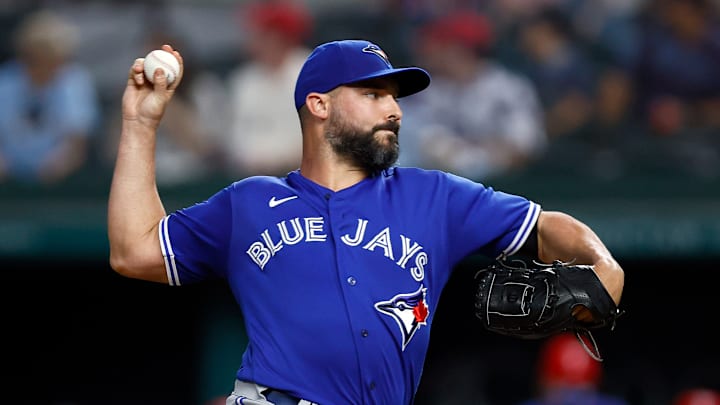On Dec. 27, 2019, the Blue Jays gave their fanbase a late Christmas present and got their man.
Hyun Jin Ryu, coming off a season with the Los Angeles Dodgers in which he led the National League in ERA and finished runner-up to Jacob deGrom in Cy Young Award voting, signed a four-year, $80M contract to join the Blue Jays. The Ryu signing, coming off three rebuilding seasons for the Blue Jays, ushered in a new era for the franchise that continues today. The veteran left-hander went 5-2 with a 2.69 ERA for the Blue Jays in 2020, helping the club reach the postseason for the first time in four years.
He wasn’t the only pitcher the Blue Jays signed that offseason, though, and the results couldn’t have been more different. Tanner Roark had been a solid pitcher earlier in his career with the Washington Nationals, twice winning at least 15 games in a season. It was harkening back to those days when the Blue Jays, on Dec. 18, gave Roark a two-year, $24M deal.
The 2020 season was the strangest the Blue Jays, and Major League Baseball, had ever witnessed. The season was reduced to 60 games. The Blue Jays spent the entire season playing in Buffalo in front of cardboard cutouts instead of actual fans. The one consistent thing of the whole year was that, every fifth day, Roark took the mound and struggled mightily.
Roark didn’t last past the fifth inning in any of his 11 starts. He gave up six runs, including four home runs, in one outing against the New York Yankees; in his next start, also against the Yankees, Roark got one more out but again was charged for six runs. He surrendered 2.6 homers per nine innings, the worst of any starting pitcher with as many innings in Blue Jays franchise history. The $12 million he stood to earn before salaries were prorated in the shortened season was good for just two wins and a 6.80 ERA, sixth-worst of any Blue Jay with as many as 11 starts.
Roark signed for two years, but he didn’t make it that far. After opening the 2021 season in the rotation, he gave up five runs in just three innings in his first start and was demoted to the bullpen. The Blue Jays released him in May, bringing an end to the worst free-agent signing for the franchise in the last decade.
Besides Ryu, none of the pitchers the Blue Jays acquired in that busy offseason didn’t pan out. Not by a long shot. Chase Anderson arrived in Toronto (or, actually, Buffalo) after a trade with the Milwaukee Brewers, where he had a 3.63 ERA across 82 starts the previous three seasons; the Blue Jays then exercised his $8.5M option. Anderson started decently with the Blue Jays, posting a 3.20 ERA through his first five starts.
Then everything came undone. He gave up three home runs in an inning against the Red Sox. He didn’t make it out of the third inning in his next start after surrendering a three-run homer to the Mets’ Michael Conforto. On Sept. 17 against the Yankees, he became only the second pitcher in MLB history to give up five home runs in an inning after Michael Blazek in 2017, who wasn’t being paid $8.5M . Four of those homers came on the first pitch of the at-bat; Anderson wasn’t fooling anybody.
Anderson was allowed to leave in free agency after the season, his tenure with the Blue Jays ending with a 7.22 ERA in 10 appearances. Roark and Anderson combined to make 18 starts for the Blue Jays in 2020, nearly a third of the season, and had a collective 6.97 ERA. The Blue Jays made the postseason in spite of those acquisitions, not, as originally hoped, because of them.
The experience with Roark and Anderson showed there are no shortcuts and sure things when building a playoff-caliber pitching staff. Luckily for the Blue Jays' front office that offseason, the addition of Ryu more than made up for those big misses.
